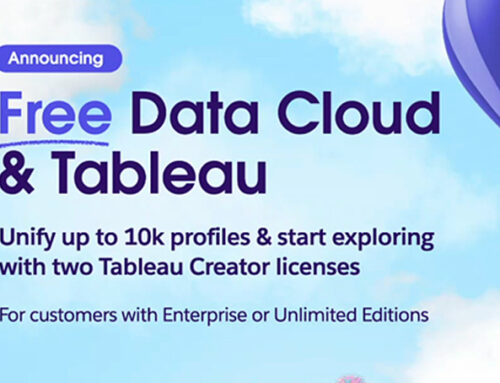Salesforce defines a trailblazer in a traditional sense and Salesforce trailblazers all have a unique story to tell. From when their Salesforce journey began to what path they are on today, and trailblazers hold various roles in organizations such as administrators, developers, marketing teams, CIOs, CMOs and beyond and span the spectrum of startups to enterprise organizations. But regardless of your role, your knowledge or current location on your Salesforce journey, if you are tackling a Salesforce implementation, you are likely a trailblazer, whether that means that you are a pioneer; an innovator; a lifelong learner; a mover and shaker, an organization or industry leader who leaves a path for others to follow, or our favorite, and possibly, most importantly, a person who builds a better world for others.
Whether you’re rolling out a new Salesforce database to 2 people or 200, it can be a daunting experience. At EMS, we worked with thousands of organizations and seen both struggle and success. Here are some strategies that we have seen increase the success of implementation projects by improving user adoption and buy-in.
Create a Communication Plan and Start it Early
One of the best ways to get people on board with a new technology system is to talk about it. The earlier you introduce the new system to your staff, the better. This will give you more insight into who is enthusiastic and who your detractors may be. But fear not, because some of your detractors at the beginning can become your biggest advocates in the end. Focus on communicating often and through varied delivery methods, or channels.
1. Create a newsletter or other communication device to send out at a regular interval.
It can be easy to forget to update your staff about the progress on the project, so consider setting up a regular schedule for communication. You can deliver your updates in an email or newsletter format, deliver announcements at weekly meetings, or post something on a physical bulletin board. Setting a schedule will force you to communicate regularly and allow your staff to get information in a predictable fashion.
2. Model Enthusiasm, and make it fun!
If you show apprehension, indecisiveness, and dread when discussing the new system, your staff will echo that behavior. Even if you don’t always feel confident about the project, keep the energy upbeat and remind staff of the positive things that the new system will bring. There are also lots of things you can do to make the experience fun! Name your new database and create a branded campaign around the project, create funny videos about progress, make some swag, wear a silly hat when you talk about Salesforce, the possibilities are endless!
3. Be clear on the timeline, and what is included.
One of your biggest responsibilities while communicating about your project is having clarity on timeline and functionality. We can often get carried away when talking about Salesforce because it can do so much, so be clear with your staff about what they should and should not expect the system to do on day 1. Also, tell them when day 1 is! Your timeline might not stay perfectly on course throughout the project, but keep everyone apprised of when they will be testing, training, and going live.
Build Relationships and Get Buy-In at all Levels
We have seen projects hit rough spots when key staff or departments are not on board. We’ve also seen projects that are successful until they launch and someone realizes they didn’t get a key piece of functionality. There is a lot that can go wrong on an implementation project if you don’t have the right people in the room. Here are some fundamental concepts for ensuring that all levels of your company are involved and bought-in:
1. Make a committee with representation from all departments or roles.
One of the best ways we have seen success in getting buy-in is through establishing a committee for the project with diverse representation. Try not to think of this as simply including the head of each department, but diversity across roles as well. Often times you’ll get more concrete feedback from your data entry folks than from your execs. By diversifying your committee, you’ll be able to catch issues early, and catch more issues before you go-live. Your committee will help you with decision making, prioritization, and communication.
2. Get Executive Buy-In.
It’s important to not only get financial sign-off from the executive level at the outset of the project, but to make sure that your execs have a say in key decisions and messaging. If you lose buy-in from your leadership, it can seriously harm user adoption down the line. Consider tying the project goals into larger company goals and continually pointing to how Salesforce will affect the growth of the company.
3. Administrative Buy-In.
Your administrative staff are the boots-on-the-ground in your databases. Their buy-in and involvement in the project is crucial to its success. They will likely be the primary users of the system and will have the most feedback on user experience. Keep these folks involved and happy to increase your chances of user adoption.
4. Lean into your detractors.
You will undoubtedly have staff who are not happy with the project. Sometimes these folks went through bad technology change projects in the past, sometimes they simply don’t like change, and sometimes they have specific reasons for thinking the project will not be successful. It is tempting to ignore the haters, but the projects that go best are the ones where the negative feedback is heard, documented, and discussed. Furthermore, if you have a staff member or two who are publicly against the project, changing their minds can be a huge morale boost for the project.
Create Clear & Transparent Pathways for Employees to Share Ideas and Feedback
Your instinct may be to hunker down and run your project behind the scenes, then present it in one big reveal. Resist the urge to do this! We know it’s tempting to take all the credit and make decisions for others, but you’re bound to miss something. And the truth is that most people don’t react well to this strategy, especially if it will affect their daily work life and you didn’t consider any of their needs or provide a way for them to express them.
1. Get feedback early and often.
One of the best ways to increase project success is to ask for feedback early and often. At EMS Consulting, we believe in providing guided user testing to both allow staff to learn the system and give feedback about their experience. It may feel tedious or like it’s slowing down the project to have users do thorough testing, but you’ll get much better results and buy-in if you do.
2. Transparent Decision-Making.
By opening up the feedback gates, you’ll also unlock another secret-sauce for successful projects: transparent decision-making. Simply receiving feedback is not enough. You have to take action on that feedback and loop back to communicate what decisions were made. Users can be easily miffed by you ignoring their feedback, even if it’s about something simple like what a button is named. Even if you don’t implement their idea, give them a clear reason why.
Prioritize and Phase
We have some news for you, you won’t be able to have it all. In fact, some of your needs may be completely at odds with each other. Furthermore, not everything is high-priority. We have seen some projects start to go south when project leads can’t decide what is most important and as a result they spread the team too thin trying to do everything at once. Successful projects always have sound decision-making and a big part of that is being able to prioritize. Here are some tools for prioritization and decision-making.
1. Prioritize by number of records.
When you are building a new database, it is easy to end up going down rabbit-holes, spending a ton of time on exception cases or a small subset of records. If you feel your decision-making is getting clouded by these scenarios, pop back up to the big picture and make sure you create a solution for the majority of records or the most common scenarios first.
2. Prioritize with the Pareto Principle.
The most common scenario is not always the most important. Perhaps most of your revenue comes from the top 20% of your accounts, and those accounts need a more hands-on sales process. The Pareto Principle or 80/20 rule can help you pull out importance over simple record counts. This may seem directly counter to the above point, but it actually works in tandem. If you are spending time and resources on an exception case that has low importance, then you are wasting time and resources. But if you are spending time on exception cases that have high importance, then you are actually investing time and getting a higher return. Use this concept to help you prioritize functionality needs.
3. Phases can be good!
Some projects are going to be too big to do all at once. Phasing a project can be a healthy way to ramp up a new database while reducing risk. A natural break point for phases can be around departments. Consider pushing one department live at a time to break up a project. You can also create phases around existing versus new functionality. With this phasing, you would focus on replacing your existing systems first, then having later phases focused on adding new functionality. Consider reading our blog on increasing user adoption as well, especially when you get closer to go-live!






